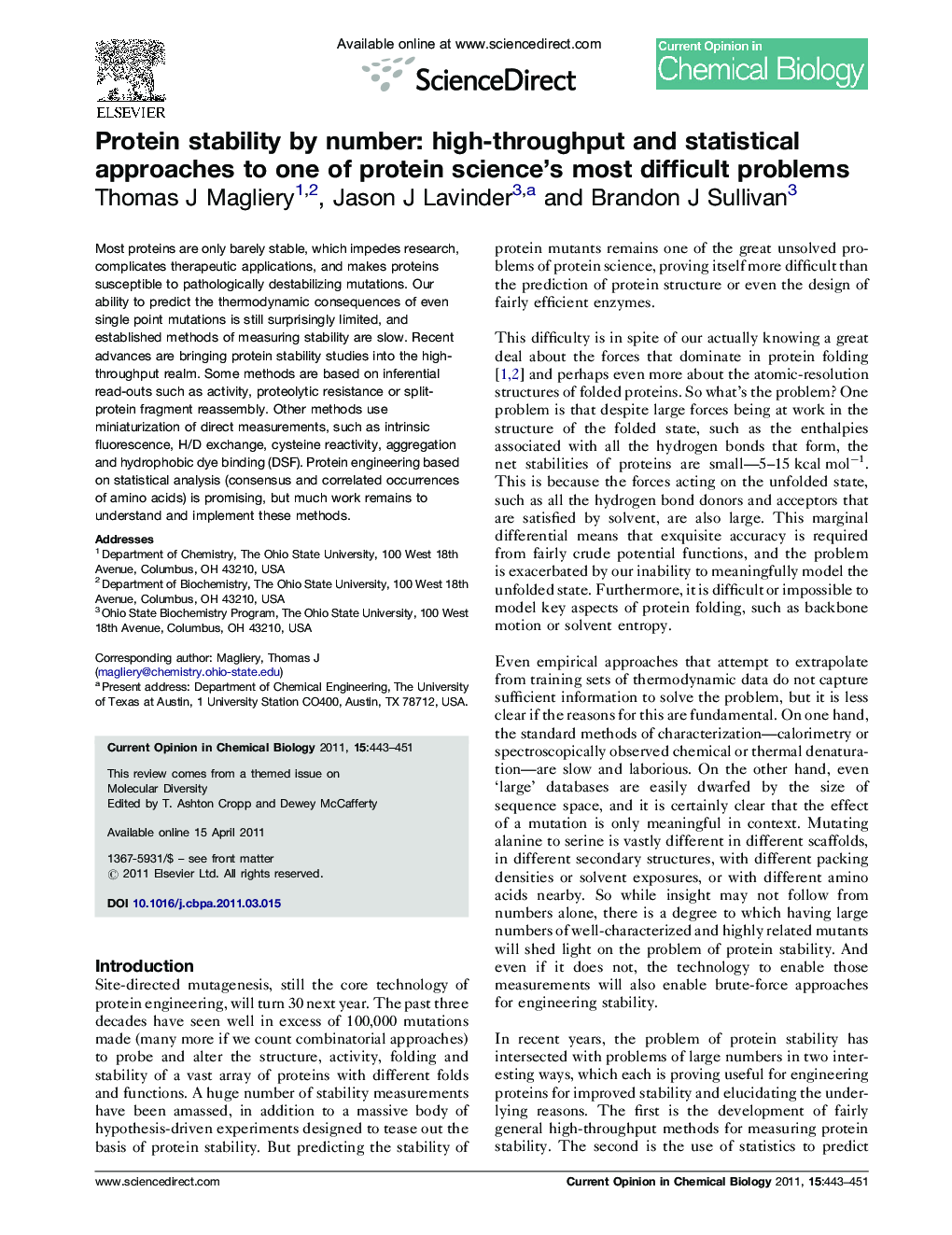| Article ID | Journal | Published Year | Pages | File Type |
|---|---|---|---|---|
| 1256693 | Current Opinion in Chemical Biology | 2011 | 9 Pages |
Most proteins are only barely stable, which impedes research, complicates therapeutic applications, and makes proteins susceptible to pathologically destabilizing mutations. Our ability to predict the thermodynamic consequences of even single point mutations is still surprisingly limited, and established methods of measuring stability are slow. Recent advances are bringing protein stability studies into the high-throughput realm. Some methods are based on inferential read-outs such as activity, proteolytic resistance or split-protein fragment reassembly. Other methods use miniaturization of direct measurements, such as intrinsic fluorescence, H/D exchange, cysteine reactivity, aggregation and hydrophobic dye binding (DSF). Protein engineering based on statistical analysis (consensus and correlated occurrences of amino acids) is promising, but much work remains to understand and implement these methods.
